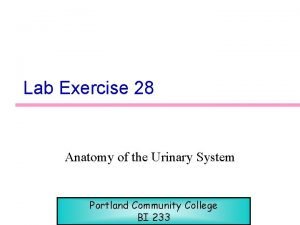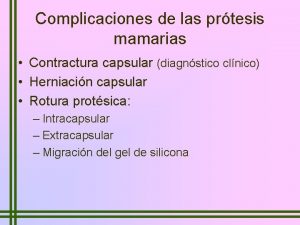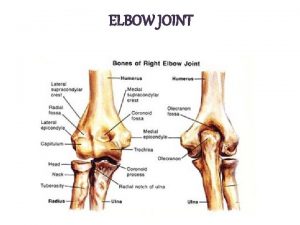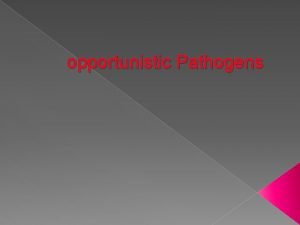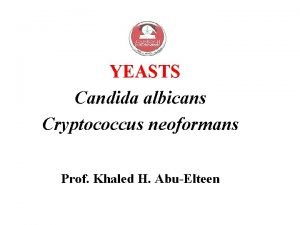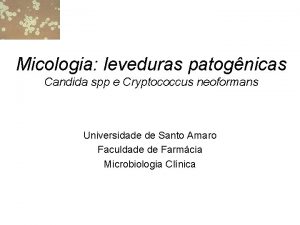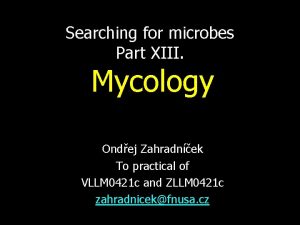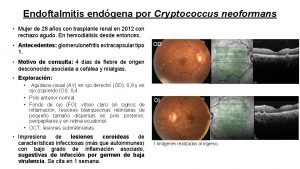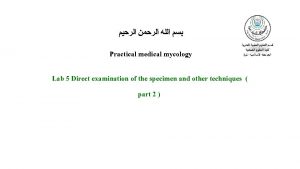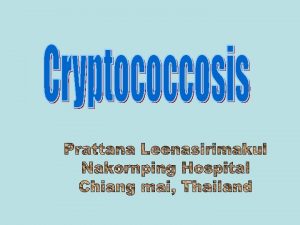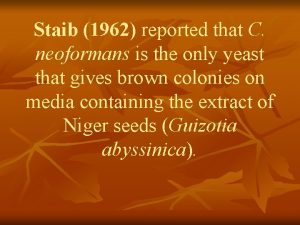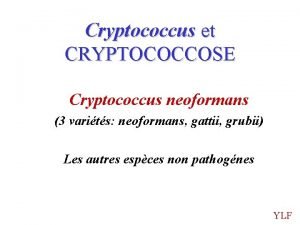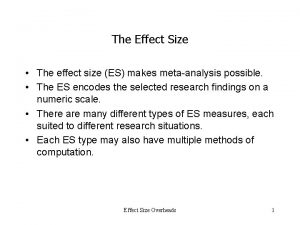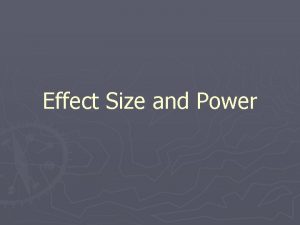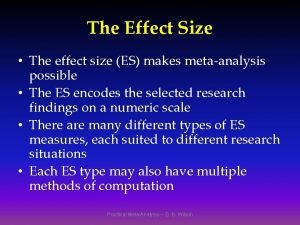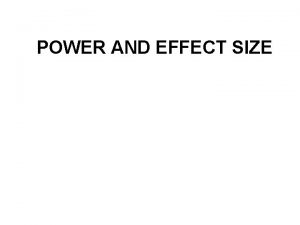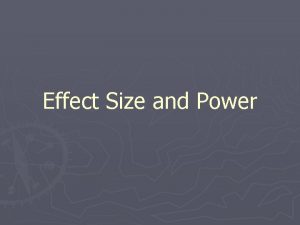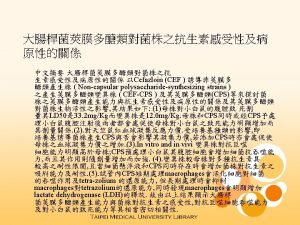The Effect of Capsular Size of C neoformans













- Slides: 13

The Effect of Capsular Size of C. neoformans on Pathogenicity and Pathological Changes in Experimentally Infected Mice 1 Kawkab A. Ahmed, 2 Heidy Abo El Yazeed, 3 Hosam Kotb, 4 Mona Elshabrawy, 4*Randa Alarousy and 2 Mohamed Refai

Introduction The effect of the C. neoformans polysaccharide capsule on the host cells can be summarized as : it interferes with phagocytosis, blocks the recruitment of inflammatory cells, increases costimulatory molecules, suppresses the delayed-typehypersensitivity response, and reduces the antibody production in response to fungal infection. The capsule plays a significant role in pathogenicity, because it protects the yeast cells from phagocytosis and from cytokines induced by the phagocytic process and suppresses both cellular and humoral immunity.

A large capsule can block the opsonic effect of complement and anticryptococcal antibodies. It can limit production of nitric oxide (which is an inhibitor of cryptococcal cells) and interferes with the antigen presentation process.

§ Once it is internalized by macrophages, C. neoformans may grow and eventually lyses the macrophage, be killed by the macrophage, or live within the macrophage in equilibrium for an undetermined amount of time. § A capsular cryptococcal strains are not pathogenic. On the other hand, although other cryptococcal species Produce a similar capsule, they also are not pathogenic. This suggested that the capsule is necessary but not sufficient for fungal cells to cause disease and that its ability to aid infection is enhanced by other virulence factors.

Aim of work q to identify the correlation of capsular size and pathogenicity of C. neoformans in experimentally infected mice.

Materials and Methods Experimental Design: Seven groups of male mice, weighing about 80 gram each were used; each group of them contained 10 mice. Six groups were used for the proper experimental infection and the seventh group was kept as a control. Yeast concentrations were adjusted using the haemocytometer to count the yeast cells (1× 10 -5 - 1× 10 -7 / ml) in order to equalize the injected yeast cells rather than the capsule size. Each mice of the first 4 groups was injected with 200 μl yeast cells suspension (I / V) of the respective phenotype (O, R, T and H). The fifth group (R`) was injected with 200 μl of cinnamon bark extract 24 hour post infection with the (R) phenotype and the sixth was injected with 200 μl of (P) suspension (pink colony phenotype). The last group was injected with sterile normal saline solution (I/V) and kept as a control.

q Clinical and P. M. examinations All the mice were observed to detect any abnormal clinical signs. All mice from all groups were euthanized by the elapse of the second week post infection and their organs; brain, liver, spleen and lung were extracted for histopathological examination, and post mortem abnormalities of the extracted organs were recorded. q Histopathological studies Specimens from brain, liver, spleen and lung were taken immediately after sacrification from all groups. Specimens were fixed in 10% buffered neutral formalin solution. The fixed specimens were then trimmed, washed and dehydrated in ascending grades of alcohol, cleaned in Xylene, embedded in paraffin sectioned (4 -6 microliter thickness) and stained with hematoxylene and eosin as routine stain as well as Gomori silver stain (GMS),

Results P. M. findings Photo (1): Pale liver containing pus sac in mice infected with original strain (O)

Photo 2 Congested brain in mice infected with capsular strain (R) Photo 3 Congested liver in mice infected with capsular strain Photo 4 Severe congested lung in mice infected with capsular strain (R) Photo 5 Severe spleen enlargement in mice infected with a-capsular strain (T)

Histopathological Results Liver of mice from group (T) showing perivascular leucocytic cells infiltration(H and E stain X 200) Liver of mice from group (R) showing black stained wide capsule of yeast cells of Cryptococcus(GMS stain X 400

Lung of mice from group (O) showing soap – bubble appearance of C neoformans in the lumen of bronchiole (H and E stain X 200 Lung of mice from group (R) showing round and crescent yeast cell of Cryptococcus neoformans with wide black capsule (GMS stain X 1000 Brain of mice from group (O) showing black stained wide capsule of yeast cells of Cryptococcus neoformans (GMS stain X 1000)

Conclusion

